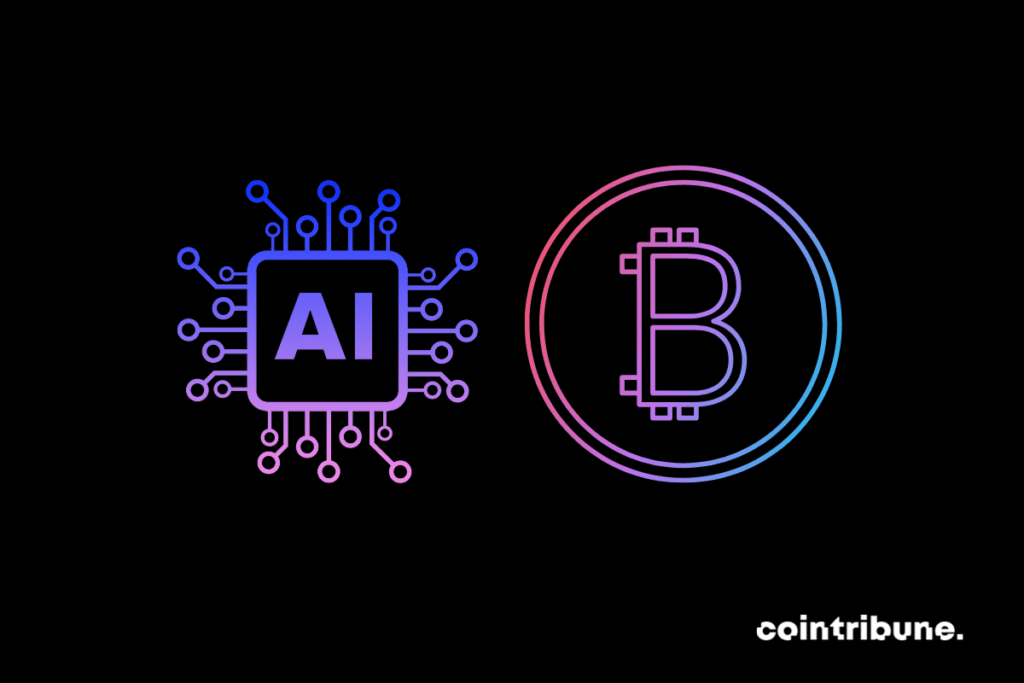New research shows how #brain-like computers
— Spiros Margaris (@SpirosMargaris) July 25, 2023
could revolutionize #blockchain and #AIhttps://t.co/TCz2smatpI #fintech #ArtificialIntelligence #MachineLearning #GenerativeAI @mrgreene1977 @cointelegraph @tudresden_de @Julez_Norton @WSWMUC @Fisher85M @HeinzVHoenen @WhiteheartVic pic.twitter.com/29CbbyIu2y
A
A
Neuromorphic computing leads revolution in cryptocurrencies and AI
Wed 26 Jul 2023 ▪
3
min read ▪ by
Getting informed
▪
Recently, artificial intelligence (AI) and blockchain seem to be competing with each other. This is despite the fact that some see them as complementary. However, recent work in the emerging field of neuromorphic computing could bridge the gap between these two areas of computing.

Neuromorphic computing, a game changer for blockchain and AI?
In a recent analysis, renowned economist Nassim Nicholas Taleb suggested the existing rivalry between cryptocurrencies and AI. This competition could turn into effective complementarity. This, thanks to the results of a recent study conducted at Technische Universität Dresden in Germany.
The study essentially covers the field of neuromorphic computing. This is an emerging field of computer science, which designs information processing mechanisms inspired by the way the human brain works.
The approach of this discipline is to develop electronic devices that mimic the neural circuits of the human brain. The aim is to create computers that perform certain tasks more efficiently and rapidly than conventional computers.
And it’s fair to say that the work of researchers at this German university is bearing fruit. Indeed, these scientists have succeeded in designing a computer that runs on neuromorphic computer chips. Materials that give them unparalleled, almost human-like performance capabilities.
To achieve this level of performance, these neuromorphic computer chips exploit what is known as “reservoir computing”. A process that enables ultra-fast algorithmic functions, thanks to magnetic properties.
This unique ability enables neuromorphic computers to excel in pattern recognition. They are also highly efficient when it comes to machine learning algorithms. Particularly in situations involving noisy or incomplete data.
This is not the case with conventional computers, which are better at numerical calculations using Boolean algebra. But not very effective in solving complex cryptographic puzzles, among others.
A clear added value?
That’s the added value of this work, whose potential is immediately apparent. Sectors such as cryptocurrencies and AI, as well as finance and transport, could find themselves revolutionized. For one simple reason: not only do these sectors require real-time data processing. But the properties of neuromorphic computer chips also make it easier to solve problems involving incomplete information. This is a major breakthrough.
Maximize your Cointribune experience with our "Read to Earn" program! For every article you read, earn points and access exclusive rewards. Sign up now and start earning benefits.
A
A
Diplômé de Sciences Po Toulouse et titulaire d'une certification consultant blockchain délivrée par Alyra, j'ai rejoint l'aventure Cointribune en 2019. Convaincu du potentiel de la blockchain pour transformer de nombreux secteurs de l'économie, j'ai pris l'engagement de sensibiliser et d'informer le grand public sur cet écosystème en constante évolution. Mon objectif est de permettre à chacun de mieux comprendre la blockchain et de saisir les opportunités qu'elle offre. Je m'efforce chaque jour de fournir une analyse objective de l'actualité, de décrypter les tendances du marché, de relayer les dernières innovations technologiques et de mettre en perspective les enjeux économiques et sociétaux de cette révolution en marche.
DISCLAIMER
The views, thoughts, and opinions expressed in this article belong solely to the author, and should not be taken as investment advice. Do your own research before taking any investment decisions.